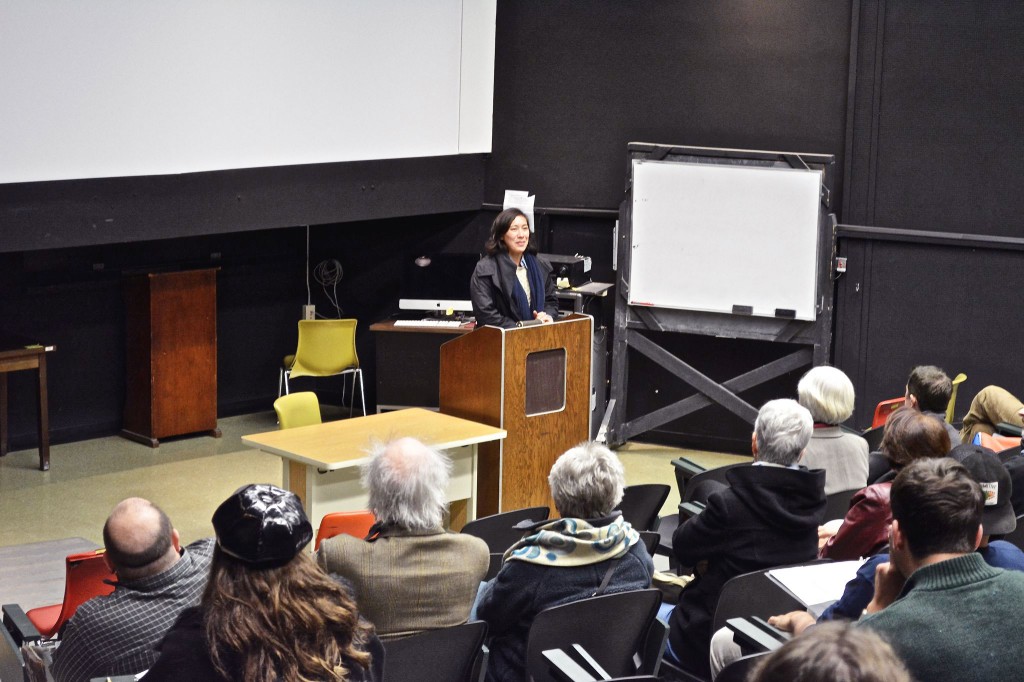
It’s not every day someone gets the chance to watch a professional film alongside its director – let alone ask questions about it after. On Friday, however, Harpur Cinema provided people with this opportunity in Lecture Hall 6, where they held a screening of Vera Brunner-Sung’s first feature-length film, “Bella Vista.”
“Bella Vista” is the first of seven films to be screened as part of the Harpur Cinema series this semester. Titles to be shown soon include french film “Je t’aime, Je t’aime,” and the Chinese film “A Touch of Sin,” which lit up the festival circuit.
Brunner-Sung, an adjunct lecturer at the University of Montana, introduced her film to the audience.
“It may be different from the kinds of films you’re used to seeing,” she said. “It does have a slower pace, there are a lot of wide, long shots, and I guess all I’ll say about that is I really enjoy that kind of composition because it lets my attention wander in the frame and think about the sound as well.”
This seemed fair enough. After all, the name of the film means “good view,” so it would make sense there would be some degree of emphasis on wide shots, stillness and scenery.
Yet despite this introduction, it didn’t make it any easier to watch for the next 83 minutes. While the wide, long shots of scenic, cloudy Montana gave thoughtful context to a narrative about isolation and loneliness, the extreme length of the cuts and their lack of eventfulness made the film feel tedious and downright uninteresting. This isn’t to say that long shots can’t be powerful. They are a commendable risk for any director, giving a sense of vulnerable realism to the otherwise highly chopped and edited world of film. They can also be simply beautiful or meditative, as many of the quiet, scenic shots in “Bella Vista” were. While this painterly aspect of the film had some appeal, its lack of variety in pacing or in including other kinds of shots made the narrative fall flat, and the movie feel like one where nothing was moving, both literally and figuratively.
When the film was over, Brunner-Sung said that the stillness and sense of frustration the film induced was its intended purpose. She explained how the film was deeply relevant to her life, and she wrote the script after she moved from Los Angeles to Missoula, Montana, which, as she described, was like moving from “the land of sunshine into a dark grey hole.” The main character, Doris, was undergoing a similar transition and, as Brunner-Sung put it, was “in a sort of limbo state.”
“She’s drifting,” Brunner-Sung said. “Her character is the idea of a loss of identity, not sure where you belong, not able to connect anymore.”
In this sense, the film was certainly effective in evoking a sense of limbo. But even if that was its intended effect, should a film instill boredom and frustration in its audience? Especially if the feelings aren’t rooted in empathy or investment in the story, but sheer frustration with its pacing? Successful films are not necessarily always pleasurable, but they are always compelling. The limbo nature of this film about limbo prevented it from having such a moving effect.
However, Vera Brunner-Sung was herself fascinating. She’s boldly experimenting with her medium, and continually learning about it through her interactions with viewers like those of us who attended the event Friday night. It should be interesting to see what she makes and discovers about her craft in the future.


